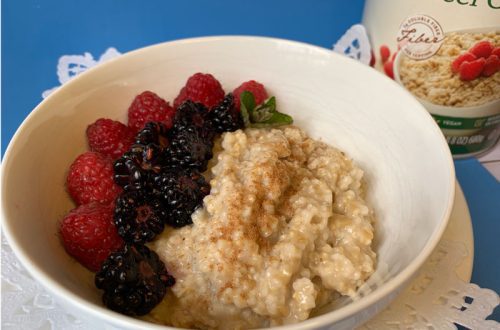
Conditions for the proper maintenance of guppies: how often to feed and what an aquarium should be equipped with
An aquarium is a magnificent decoration of any interior. Surely many have seen beautiful, bright small fish with a luxurious tail. This is the guppies. They are representatives of one of the most numerous and beautiful species of viviparous fish. The coloring of these fish can vary endlessly, delighting its owner with a riot of colors. Males are much brighter, but smaller than females. A female guppy can be twice as large.
guppy habitat
Guppies are not very demanding on their habitat, they can easily live in fresh, salted water of rivers and reservoirs. Acceptable water temperature is from 5 to 26 degrees Celsius. As you can see, these fish are quite undemanding to water quality, so breeding them at home is not so difficult, even for people who decide to start an aquarium for the first time. Guppies are bred not only by amateurs, but also by experienced aquarists, as this is one of the most interesting and beautiful fish. In this article, we will discuss the main points of guppy content.
How to properly keep guppy fish?
Experts say that guppies will feel great in any aquarium, a couple can breed even in a three-liter jar, but large sizes should not be expected. For a pair of adult fish I need an aquarium with a volume of five to six liters, for a larger number of fish, we take the calculation of one and a half to two liters per individual.
When keeping guppies, it is important to consider the quality of their habitat.
- First, we keep it clean. The water in the aquarium needs to be changed frequently, as waste products quickly pollute the habitat of the fish. Moreover, it is necessary to change the water at least 23 of the total volume of the aquarium. In addition, the aquarium should be, as already mentioned, quite spacious. Water changes should be done only with settled water of a suitable temperature, but do not top up to the very edge of the aquarium, because these very active mobile fish often jump out of the water. In addition, remember that the higher the water temperature, the shorter the life expectancy of guppies.
- Professionals often consider the most suitable plant for comfortable living with guppies. indian fern, which can serve as a living filter, enhancing the effect of a must-have installed in any aquarium. In addition, the fern serves as a kind of indicator, an indicator of the level of acid in the water, which should be from 0 to 14. For most fish, water with an average pH of seven is optimal. It should be remembered that this indicator depends on the lighting, the quality of the plants and the fish themselves, and many other factors also influence.
- Another important indicator of water quality is its hardness. As you know, it is determined by the amount of salts dissolved in it. The most suitable is water with a hardness of four to ten degrees dH. Excessively soft or very hard water is not suitable for keeping guppies.
- It is very important to monitor the lighting for the aquarium. The length of daylight hours should be about 12 hours, the well-being and growth of the fish depends on it. It is recommended to set up the aquarium so that the fish get warm sunlight, which has a very good effect on the vital activity of all living organisms. Illumination can also be monitored by the state of the fern, when it is bright green in color, it develops well, then the fish feel great, but if there is not enough light in the aquarium, then the leaves of the fern grow more slowly and become dark, with an excess – the water “blooms”.
- Particular attention should be paid to the soil for guppies. Its particles should not be excessively small, otherwise the soil will be unnecessarily dense, which interferes with the growth of vegetation and the normal circulation of water. Respectively particle size should not be too largeso that putrefactive microorganisms do not develop in the formed voids, in the accumulations of food residues and waste products of the fish. The soil should be washed no more than once every six months. Professionals also advise checking the soil for the presence of soluble salts in it by boiling the soil in water and measuring the amount of lime. If there are too many salts, naturally, such soil is not suitable for guppies and must be replaced.
What to feed guppies?
These fish are quite omnivorous, do not require special conditions of keeping and feeding. They are happy to eat, in addition to living organisms, also meat, finely chopped or scraped, and fillets of sea inhabitants. They also love cereals and various plant foods. But by no means fish should not be fed and overfed oftenotherwise they will get sick and stop breeding. They can easily survive a week-long hunger strike.
All these feeds need to be alternated, but live ones should still prevail. The brightness of the color of male guppies depends on this. By size feed should be smallaccessible to small fish. Experts distinguish three types of food for these fish:
- artificially bred live food, such as bloodworm, daphnia, infusoria;
- all feed;
- other food such as scraped cheese, meat and the like.
With proper care and good, proper maintenance, these wonderful creatures will delight their owner with activity, liveliness, a riot of colors, helping to relax after a busy day. The guppy aquarium is well suited for families with children. The fish will bring healthy offspring, allowing you to observe the entire cycle of their development and replenishing the aquarium with new colors. Mature, healthy female guppy can bring offspring quite often up to eight times a year. The number of fry can be different, reaching up to a hundred in old females. In addition, as you have noticed, keeping guppies does not require large material and time costs, they do not need to be fed often, but they will bring you a lot of positive emotions.





